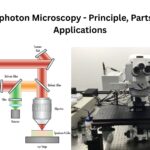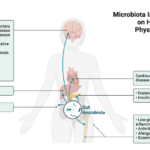Explain anaerobic cellular respiration, noting the lactic and alcoholic fermentation processes.
Explain anaerobic cellular respiration, noting the lactic and alcoholic fermentation processes.
Answered
Anaerobic cellular respiration is a form of energy production that occurs when oxygen is not available. In contrast to aerobic respiration, which relies on oxygen to produce ATP (adenosine triphosphate) through oxidative phosphorylation in the mitochondria, anaerobic respiration generates ATP through glycolysis and subsequent fermentation processes. This pathway is essential for cells to continue producing energy in oxygen-deprived conditions.
Glycolysis
Glycolysis is the first step of both aerobic and anaerobic respiration. It occurs in the cytoplasm of the cell and breaks down one molecule of glucose (a 6-carbon sugar) into two molecules of pyruvate (a 3-carbon compound). This process generates a net gain of 2 ATP molecules and 2 NADH molecules.
In the absence of oxygen, cells cannot use the citric acid cycle and the electron transport chain to further oxidize pyruvate, so they rely on fermentation to regenerate NAD⁺ from NADH, which is crucial for glycolysis to continue.
Lactic Acid Fermentation
Lactic acid fermentation occurs in many animal cells, including human muscle cells, when oxygen is scarce.
- Process: The pyruvate produced in glycolysis is reduced to lactic acid (lactate) by the enzyme lactate dehydrogenase, while NADH is oxidized back to NAD⁺.
- Equation: Pyruvate+NADH→Lactate+NAD+\text{Pyruvate} + \text{NADH} \rightarrow \text{Lactate} + \text{NAD}^+
- Outcome: This allows glycolysis to continue, producing ATP even in the absence of oxygen. However, the accumulation of lactic acid in muscles can lead to fatigue and soreness.
Alcoholic Fermentation
Alcoholic fermentation is used by many yeast and plant cells. This process is responsible for the production of ethanol and carbon dioxide, commonly observed in brewing and baking.
- Process: Pyruvate is first converted into acetaldehyde and carbon dioxide by the enzyme pyruvate decarboxylase. Acetaldehyde is then reduced to ethanol by alcohol dehydrogenase, while NADH is oxidized back to NAD⁺.
- Equation: Pyruvate→Acetaldehyde+CO2\text{Pyruvate} \rightarrow \text{Acetaldehyde} + \text{CO}_2 Acetaldehyde+NADH→Ethanol+NAD+\text{Acetaldehyde} + \text{NADH} \rightarrow \text{Ethanol} + \text{NAD}^+
- Outcome: Like lactic acid fermentation, alcoholic fermentation regenerates NAD⁺, allowing glycolysis to continue producing ATP. The ethanol and carbon dioxide produced as byproducts can be used in various industrial applications.
Summary
- Anaerobic respiration occurs when oxygen is unavailable, and it relies on glycolysis followed by fermentation to produce ATP.
- Lactic acid fermentation converts pyruvate into lactic acid and is commonly found in muscle cells.
- Alcoholic fermentation converts pyruvate into ethanol and carbon dioxide, commonly observed in yeast and plants.
Both fermentation processes are vital for regenerating NAD⁺, ensuring that glycolysis can continue in the absence of oxygen. However, they are less efficient than aerobic respiration, yielding only 2 ATP per glucose molecule compared to the 30-32 ATP produced under aerobic conditions.




